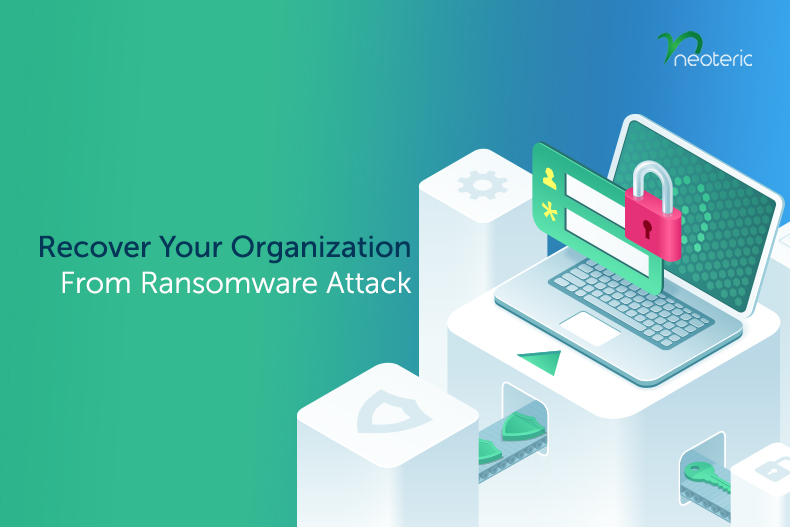Recovering from a Ransomware Attack: A Comprehensive Guide for Organizations

Recovering from a Ransomware Attack: A Comprehensive Guide for Organizations
Neoteric Admin, May 19, 2023
In today's digital landscape, ransomware attacks have emerged as a significant threat to organizations worldwide. These malicious cyberattacks can lead to devastating consequences, including financial losses, data breaches, and reputational damage. However, with a well-defined strategy and a focus on cybersecurity resilience, organizations can effectively recover from a ransomware attack. In this blog, we will explore the essential steps an organization can take to recover from such an attack and protect their data assets.
-
Identify and Isolate the Infected Systems: The first step in the recovery process is to identify the infected systems and isolate them from the network. This involves detecting the ransomware strain, determining the extent of the infection, and disconnecting the affected systems to prevent further spread. Isolating infected systems helps contain the damage and provides an opportunity to analyze the attack to understand the attack vector.
-
Assess the Impact and Restore Data: Once the infected systems are isolated, it is crucial to assess the impact of the ransomware attack. Determine which data and systems have been compromised or encrypted. If backups exist, they should be used to restore the affected data and systems. The restoration process should follow a predetermined recovery plan to minimize downtime and ensure a swift return to normal operations.
-
Strengthen Security Measures: After recovering from a ransomware attack, organizations should reevaluate their security measures to prevent future incidents. This involves updating security software, implementing multi-factor authentication, conducting security awareness training for employees, and regularly patching and updating systems to address vulnerabilities. Employing robust security practices can help mitigate the risk of future attacks.
-
Improve Incident Response and Recovery Plan: An effective incident response plan is crucial for minimizing the impact of a ransomware attack. Organizations should review their existing plan, identify areas for improvement, and make necessary updates based on lessons learned from the attack. The plan should include steps for detecting and responding to future attacks, as well as guidelines for communication and coordination with internal teams, stakeholders, and external partners.
- Backup and Disaster Recovery Solutions: Investing in reliable backup and disaster recovery solutions is vital for recovering from ransomware attacks. These solutions allow organizations to restore their data and systems quickly and efficiently, minimizing downtime and preventing data loss. Dell Data Protection and Backup Solutions, available at Neoteric Nepal, offer a comprehensive suite of tools and technologies designed to protect critical data and ensure business continuity.
Conclusion:
Recovering from a ransomware attack requires a well-executed strategy and a strong focus on cybersecurity resilience. By promptly identifying and isolating infected systems, assessing the impact, restoring data, strengthening security measures, and improving incident response and recovery plans, organizations can effectively recover from a ransomware attack. In addition, investing in reliable backup and disaster recovery solutions, such as Dell Data Protection and Backup Solutions available at Neoteric Nepal, provides an added layer of protection against future attacks and ensures the continuity of business operations. Remember, proactive measures and a resilient mindset are the key to mitigating the risks associated with ransomware attacks and safeguarding your organization's valuable assets.
